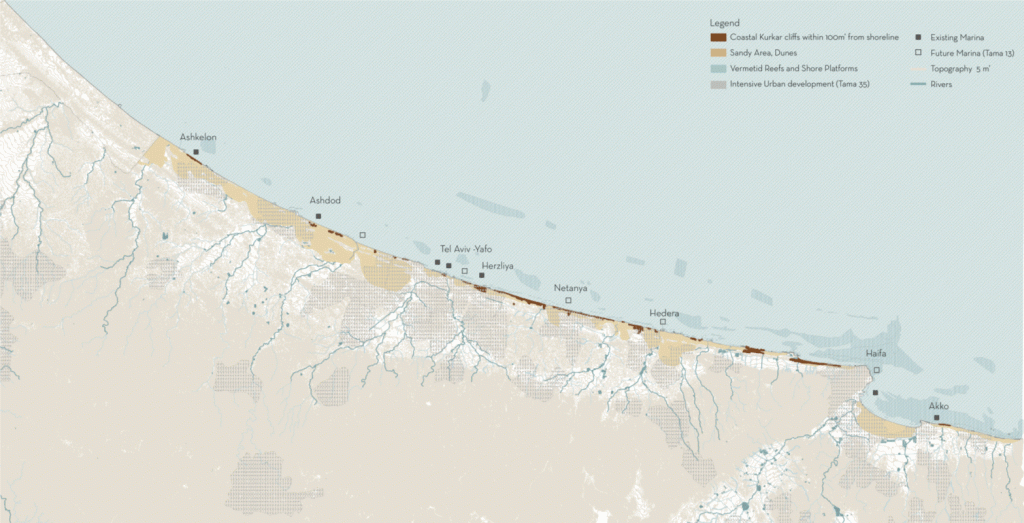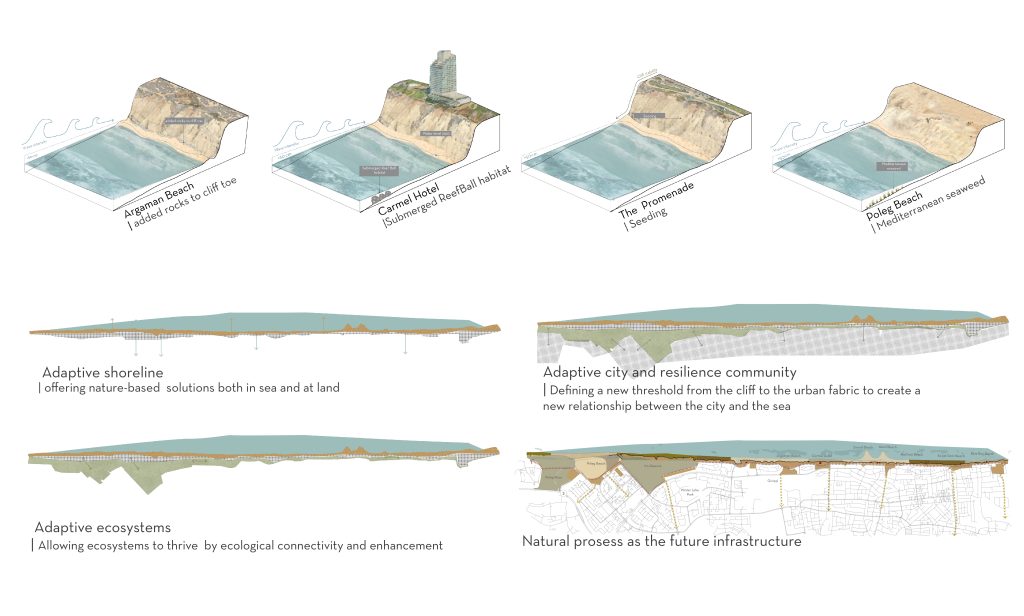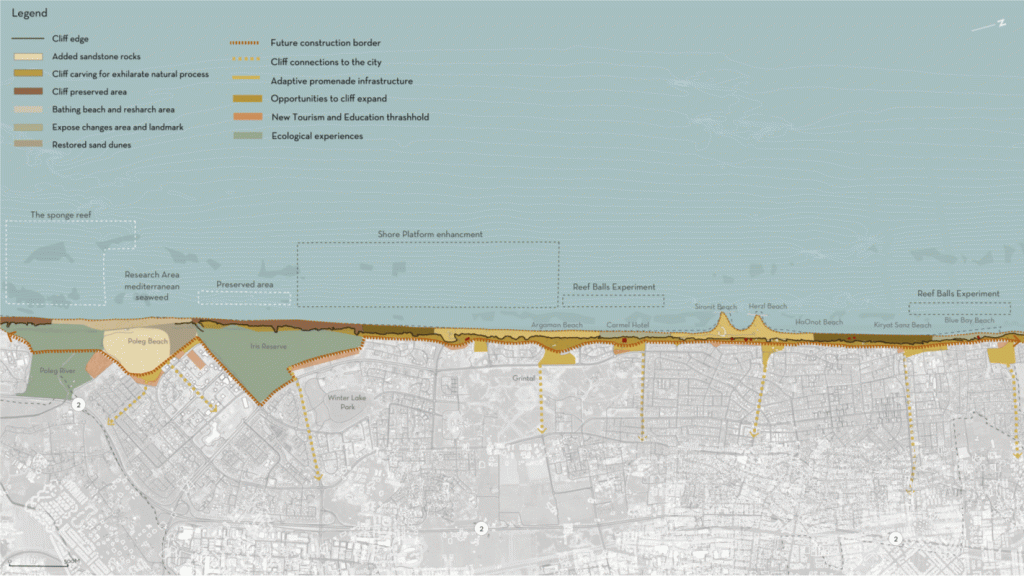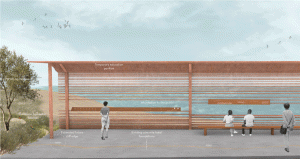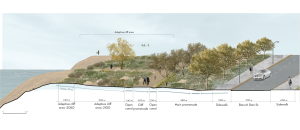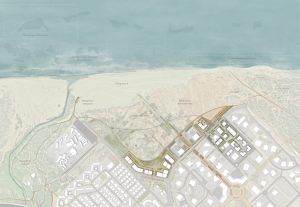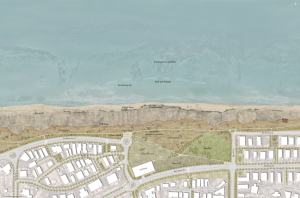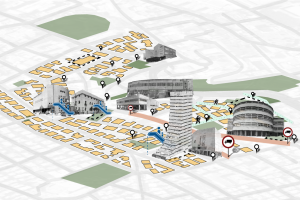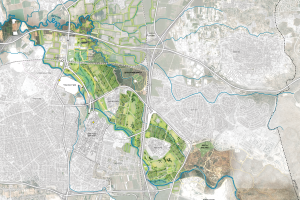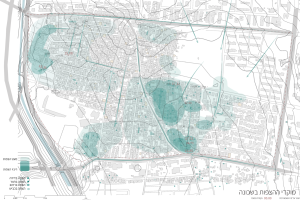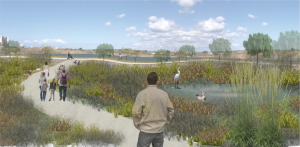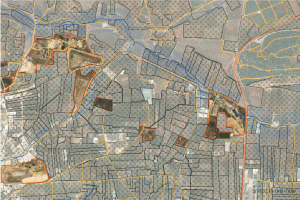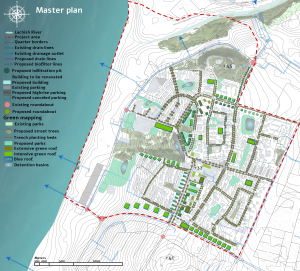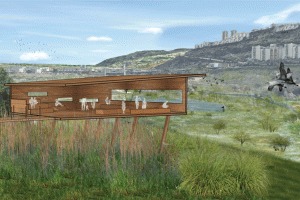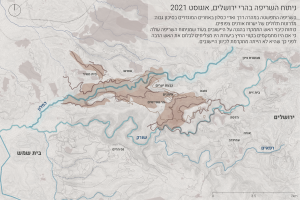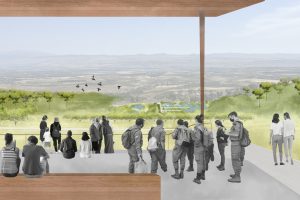Seeing the Sea | Creating a Resilient Coastline in Netanya
The sandstone Kurkar cliffs and the sand dunes are unique landscape typologies that exist in the Israeli coastal plain. However, the climate crisis and the intensive urban growth along the coast and on the cliffs are causing the coastal environment we know it today to change. This process has recently been accelerated due to the climate crisis. A rise in sea level and ocean temperature, changes in wave regime, and the decline in sediment transport are causing drastic coastal environmental changes.
Netanya is one of the most sensitive cities experiencing these problems. Its long and narrow-shaped stretches along most of the Sharon cliff and the coast has various uses. Current urban and tourist development in Netanya further threatens the dunes and cliff, reducing the remaining natural habitats and limiting public access. To protect the shoreline, the city of Netanya suggests installing artificial structures such as walls and breakwaters. These solutions lack an integral approach and can potentially harm the surrounding areas. Artificial beach widening in the breakwaters area is increasing the rate of erosion in another area. Protecting walls at the cliff base will make the cliff more stable but increase coastal erosion.
My vision is to create a resilient coastline that responds to climate change and the growth of Netanya, while allowing ecosystems to thrive by creating a new relationship between the city, people, and the sea. What will happen if we restrict construction close to the cliff and the beach and allow natural processes to take place? My framework suggests shifting the approach from engineered to nature-based, generating holistic solutions to mitigate climate change impacts on the coast of Netanya.




